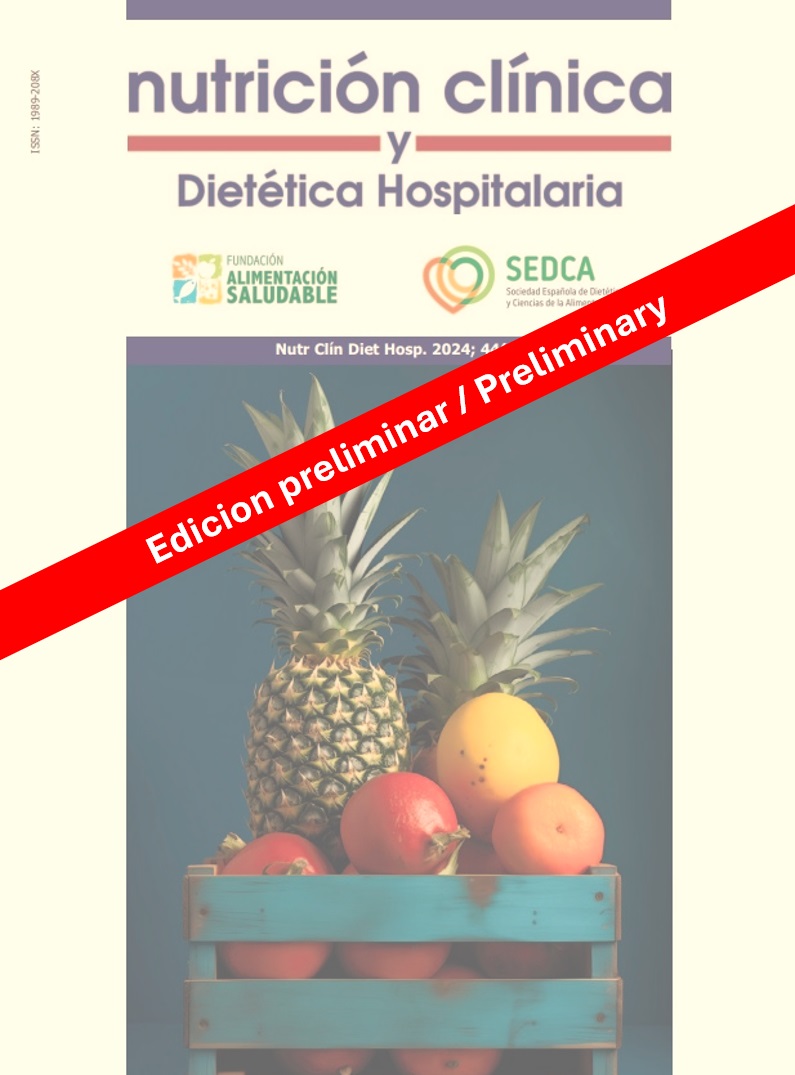Evaluation of exercise addiction and orthorexi̇a nervosa among individuals attending fitness centers: insights from an adult population study
DOI:
https://doi.org/10.12873/454arusogluPalabras clave:
Exercise addiction, emotional eating, orthorexia nervosa.Resumen
Aim: This study aimed to determine the emotional eating status and orthorexia nervosa tendencies of 87 individuals aged 18–65 who had been attending fitness centers in the city center of Kirklareli for at least three months, and to examine their association with exercise addiction.
Materials and Methods: Through a structured questionnaire, data on participants’ general characteristics, nutritional and physical activity habits, and body mass index (BMI) measurements were collected. The Exercise Addiction Scale (EAS-17) was employed to assess exercise addiction, the ORTO-11 scale to evaluate orthorexia nervosa, and the Emotional Eating Scale (EES) to measure emotional eating behaviors.
Results: The mean age of the participants was 27.07±8.66 years (Median: 24, Min: 18, Max: 52); 56.3% were male, 74.7% were single, and 65.5% had a high school education or lower. According to the EAS cut-off points, 4.6% were at low risk, 49.6% at risk, 42.5% addicted, and 3.4% highly addicted. A statistically significant difference was observed between waist circumference and the mean scores of the “Excessive Focus” and “Mood Alteration” subscales of EAS (p=0.001). Similarly, no statistically significant association was found between total and subscale EAS scores and ORTO-11 total scores (p>0.05).
Discussion: The results of this study demonstrated that, among a substantial proportion of individuals engaged in exercise, no relationship was found between exercise addiction and tendencies toward orthorexia or emotional eating.
Conclusion: It is considered beneficial for future studies to be conducted with larger sample sizes.
Referencias
1. TEKKURŞUN DEMİR G, HAZAR Z, CİCİOĞLU Hİ. Egzersiz bağımlılığı ölçeği (EBÖ): Geçerlik ve güvenirlik çalışması. Kastamonu Eğitim Dergisi. 2018;26(3):865-74. DOI: https://doi.org/10.24106/kefdergi.413383
2. Szabo A, Griffiths MD. Exercise addiction in British sport science students. International Journal of Mental Health and Addiction. 2007;5(1):25-8. DOI: https://doi.org/10.1007/s11469-006-9050-8
3. Berczik K, Szabó A, Griffiths MD, Kurimay T, Kun B, Urbán R, et al. Exercise addiction: symptoms, diagnosis, epidemiology, and etiology. Substance use & misuse. 2012;47(4):403-17. DOI: https://doi.org/10.3109/10826084.2011.639120
4. Freimuth M, Moniz S, Kim SR. Clarifying exercise addiction: differential diagnosis, co-occurring disorders, and phases of addiction. International journal of environmental research and public health. 2011;8(10):4069-81. DOI: https://doi.org/10.3390/ijerph8104069
5. Sucular E. EGZERSİZ YAPAN BİREYLERİN YEME DAVRANIŞ BOZUKLUKLARININ EGZERSİZ BAĞIMLILIĞI ÜZERİNE ETKİSİ 2020.
6. Pitta F, Troosters T, Probst V, Spruit M, Decramer M, Gosselink R. Quantifying physical activity in daily life with questionnaires and motion sensors in COPD. European respiratory journal. 2006;27(5):1040-55. DOI: https://doi.org/10.1183/09031936.06.00064105
7. Powers PS, Thompson RA. Athletes and eating disorders. 2007. DOI: https://doi.org/10.1176/appi.books.9781615377770.lg14
8. Hausenblas HA, Downs DS. Exercise dependence: A systematic review. Psychology of sport and exercise. 2002;3(2):89-123. DOI: https://doi.org/10.1016/S1469-0292(00)00015-7
9. Vardar E, Vardar SA, Toksöz İ, Süt N. Egzersiz bağımlılığı ve psikopatolojik özelliklerinin değerlendirilmesi. Düşünen Adam Psikiyatri ve Nörolojik Bilimler Dergisi. 2012;25(1):51-7. DOI: https://doi.org/10.5350/DAJPN2012250106
10. Alphan MT, Baş M, Baysal A, Kutluay T, Kızıltan G, Pekcan G. Hastalıklarda beslenme tedavisi. Baskı, Hatiboğlu Yayınları, Ankara. 2013.
11. Edition F. Diagnostic and statistical manual of mental disorders. Am Psychiatric Assoc. 2013;21.
12. Bratman S, Knight D. Health food junkies: overcoming the obsession with healthful eating: Broadway Books.; 2000.
13. Bartrina J. Orthorexia or when a healthy diet becomes an obsession. Archivos latinoamericanos de nutricion. 2007;57(4):313-5.
14. Krentz EM, Warschburger P. Sports-related correlates of disordered eating in aesthetic sports. Psychology of Sport and Exercise. 2011;12(4):375-82. DOI: https://doi.org/10.1016/j.psychsport.2011.03.004
15. Borgen JS, Corbin CB. Eating disorders among female athletes. The physician and Sportsmedicine. 1987;15(2):88-95. DOI: https://doi.org/10.1080/00913847.1987.11709282
16. Arslantaş H, Dereboy F, Yüksel R, İnalkaç S. Duygusal yeme ölçeği’nin türkçe çevirisinin geçerlik ve güvenirlik çalışması. Türk Psikiyatri Dergisi. 2019;30:1-9.
17. Faul F, Erdfelder E, Lang A-G, Buchner A. G* Power 3: A flexible statistical power analysis program for the social, behavioral, and biomedical sciences. Behavior research methods. 2007;39(2):175-91. DOI: https://doi.org/10.3758/BF03193146
18. Faul F, Erdfelder E, Buchner A, Lang A-G. Statistical power analyses using G* Power 3.1: Tests for correlation and regression analyses. Behavior research methods. 2009;41(4):1149-60. DOI: https://doi.org/10.3758/BRM.41.4.1149
19. Karagöz Y. SPSS ve AMOS uygulamalı nitel-nicel-karma bilimsel araştırma yöntemleri ve yayın etiği,(Güncellenmiş ve Geliştirilmiş 3. Basım) Nobel Akademik Yayıncılık. Haziran; 2021.
20. ARUSOĞLU ÖÜG. Beslenme ve diyetetik bölümü erkek öğrencilerinde Ortoreksiya nervoza eğiliminin belirlenmesi. Akademik Sosyal Araştırmalar Dergisi. 2018;6(86):56-71. DOI: https://doi.org/10.16992/ASOS.14457
21. Arusoğlu G, Kabakçi E, Köksal G, Merdol TK. Orthorexia Nervosa and Adaptation of ORTO-11 into Turkish. Turkish journal of psychiatry. 2008;19(3).
22. Arslantaş H, Dereboy F, Yüksel R, İnalkaç S. Duygusal yeme ölçeği’nin türkçe çevirisinin geçerlik ve güvenirlik çalışması. Türk Psikiyatri Dergisi. 2019;30:1-10.
23. Kuzu A, Öztürk PÇ. Spor yapan bireylerde egzersiz bağımlılığı, ortoreksiya nervoza ve etkileyen faktörlerin belirlenmesi. Sağlık Akademisyenleri Dergisi. 2023;10(2):226-34. DOI: https://doi.org/10.52880/sagakaderg.1222578
24. Marques A, Peralta M, Sarmento H, Loureiro V, Gouveia ÉR, Gaspar de Matos M. Prevalence of risk for exercise dependence: A systematic review. Sports Medicine. 2019;49(2):319-30. DOI: https://doi.org/10.1007/s40279-018-1011-4
25. Pulur A, Gedık A. Fitness merkezine giden bireylerin egzersiz bağımlılıklarının incelenmesi. Sportive. 2021;4(2):12-23. DOI: https://doi.org/10.53025/sportive.875537
26. Baysal I, Kızıltan G. Spor yapan bireylerin ortoreksiya nervoza eğilimleri ile beslenme durumları arasındaki ilişkinin belirlenmesi. Başkent Üniversitesi Sağlık Bilimleri Fakültesi Dergisi-BÜSBİD. 2020;5(3). DOI: https://doi.org/10.33076/2020.BDD.1361
27. White M, Berry R, Rodgers RF. Body image and body change behaviors associated with orthorexia symptoms in males. Body image. 2020;34:46-50. DOI: https://doi.org/10.1016/j.bodyim.2020.05.003
Descargas
Publicado
Número
Sección
Categorías
Licencia
Derechos de autor 2025 Nutrición Clínica y Dietética Hospitalaria

Esta obra está bajo una licencia internacional Creative Commons Atribución-NoComercial-SinDerivadas 4.0.
Los lectores pueden utilizar los textos publicados de acuerdo con la definición BOAI (Budapest Open Access Initiative)



